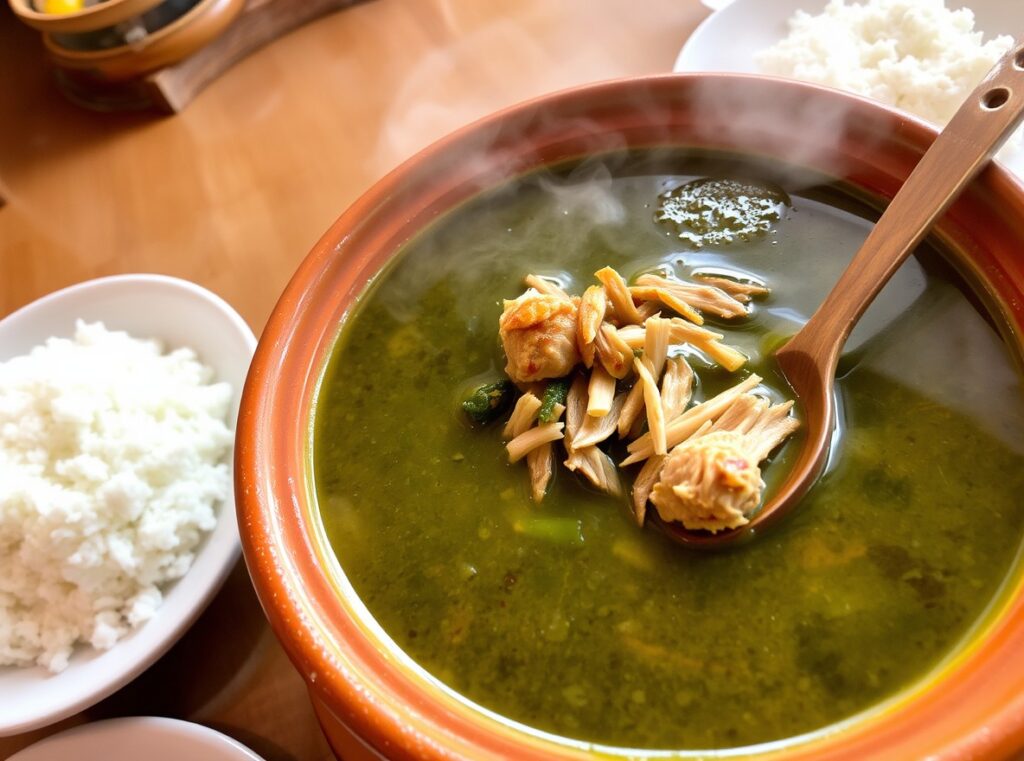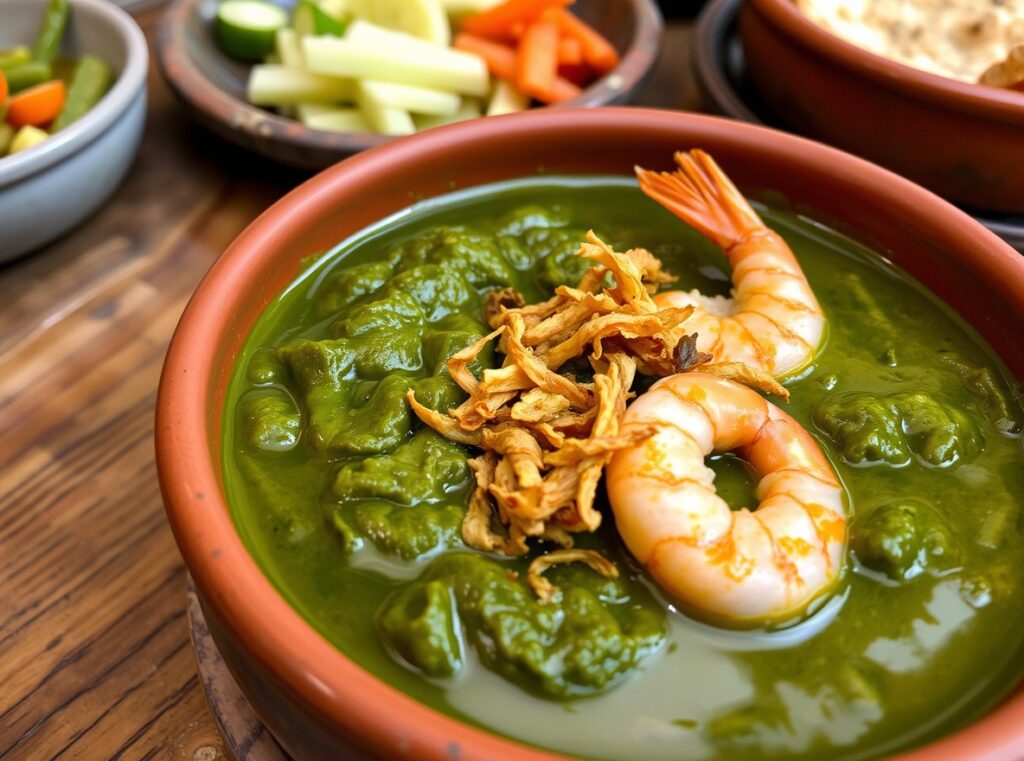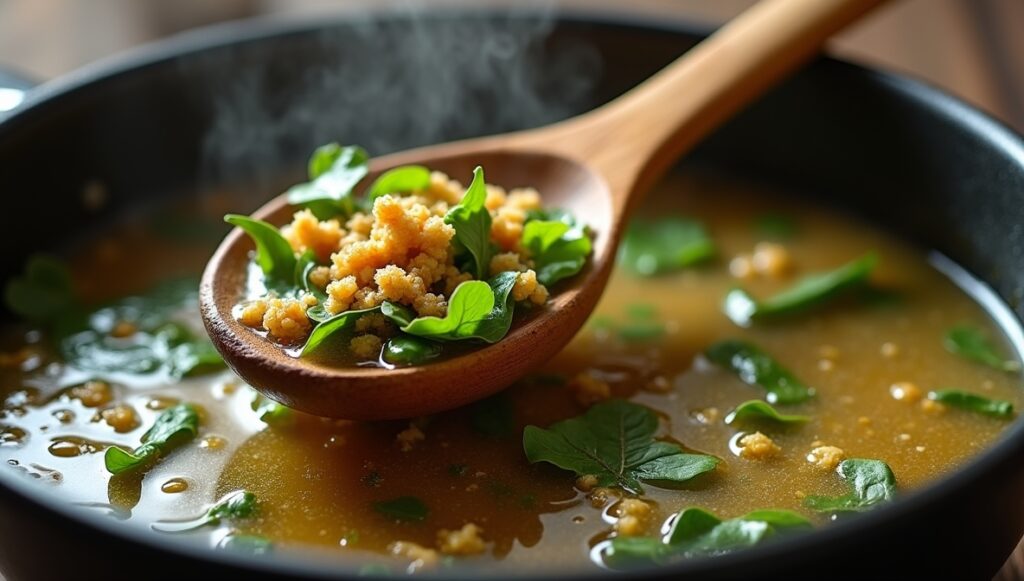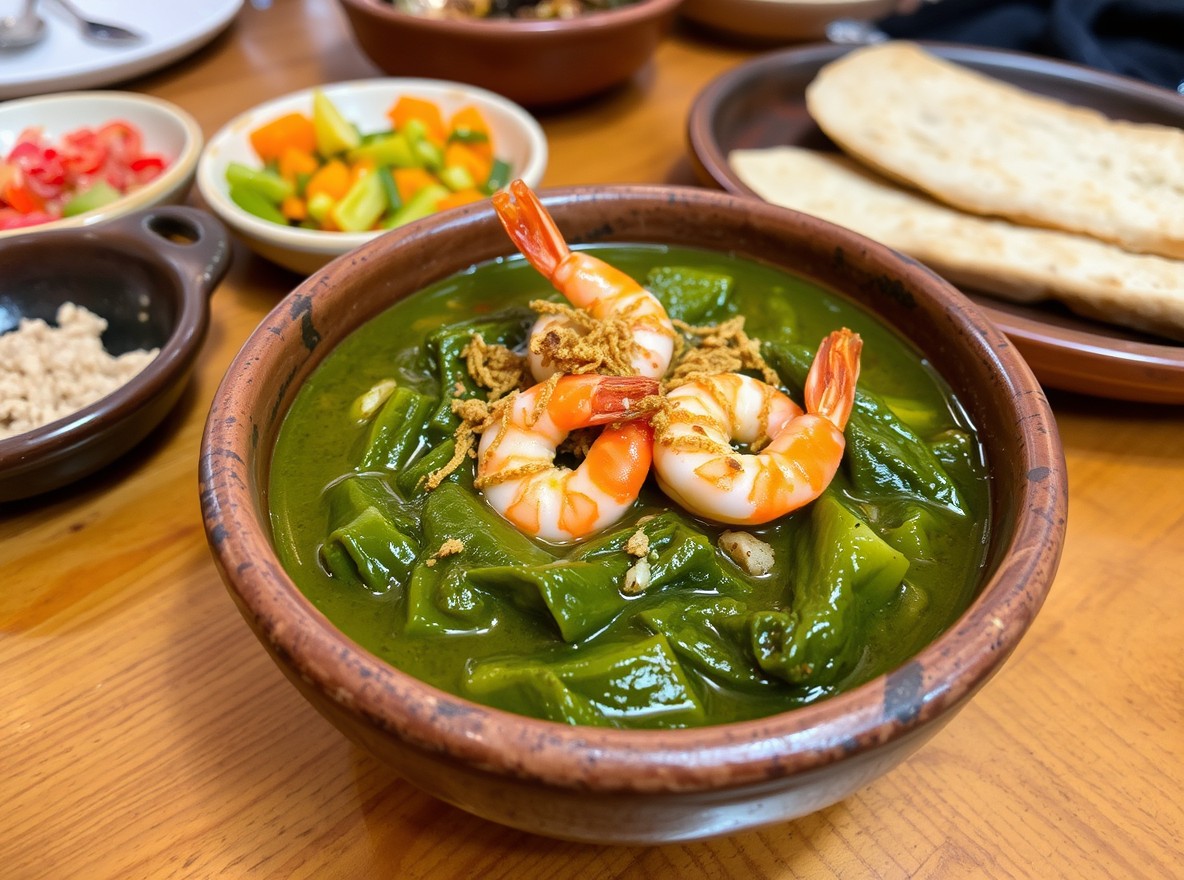Introduction
A staple in Egyptian cuisine, Molokhia is a flavorful and nutrient-rich dish made from finely chopped jute leaves cooked into a rich, garlicky broth. This traditional Egypt food is loved for its unique texture and deep umami flavor. Served with rice, bread, or alongside slow-cooked meats, it remains a cherished meal in Egyptian households. Its rich history and comforting taste make it one of the famous foods in Egypt enjoyed across generations.


History & Cultural Significance
This dish dates back to ancient Egypt, with some accounts suggesting that it was consumed by pharaohs for its reputed health benefits. Over the centuries, it has become a symbol of home-cooked comfort and family gatherings. Traditionally prepared during feasts and special occasions, Molokhia embodies Egyptian hospitality and culinary tradition. It is particularly popular during Ramadan and celebratory meals, where families come together to enjoy its distinctive taste.
Ingredients & Regional Variations
Key Ingredients:
Jute leaves (fresh or dried)
Garlic (finely minced)
Coriander (ground or fresh)
Chicken, rabbit, or beef broth
Ghee or olive oil
Salt and black pepper
Lemon juice (optional for added tanginess)
Regional Variations:
Cairo & Alexandria: Often served with roasted chicken or beef.
Upper Egypt: Features a thicker consistency and is sometimes made with rabbit.
Coastal Areas: Uses seafood broth for a unique twist.
Cooking Process & Difficulty Level

Preparing this dish requires patience and precision, particularly in handling the jute leaves.
Step-by-Step Cooking Guide:
Wash and finely chop the jute leaves.
Heat broth (chicken, beef, or seafood) and bring to a simmer.
Sauté garlic and coriander in ghee or olive oil until aromatic.
Stir in the chopped leaves and cook for a few minutes.
Avoid overcooking to maintain the right consistency.
Serve hot with rice, bread, or slow-cooked meat.
Best Places to Try Molokhia in Egypt
For those looking to experience the best Molokhia recipe outside of home cooking, Egypt offers excellent dining options:
Abou El Sid (Cairo & Alexandria): A must-visit for authentic traditional Egypt food.
Kebdet El Prince (Cairo): Famous for its rich and flavorful take on the dish.
Local Street Vendors & Home-Style Restaurants: Many smaller eateries across Egypt serve some of the best versions of this dish.
Pairing with Drinks & Side Dishes
Drinks: Pairs well with mint tea, hibiscus juice (karkadeh), or fresh lemon juice.
Side Dishes: Typically served with Egyptian baladi bread, rice, pickled vegetables, or grilled meat.
Fun Facts & Lesser-Known Trivia
The dish was once banned during the Fatimid Caliphate due to its popularity among rival factions.
It is considered a superfood, rich in vitamins and antioxidants.
Many Egyptian households have their own secret family recipe.
Health Benefits & Nutrition
High in Vitamins & Minerals: Packed with vitamins A, C, and E.
Good for Digestion: The leafy greens aid in digestive health.
Low in Calories: A nutritious yet light dish, perfect for a balanced diet.
How to Cook It at Home (Simple Recipe)
Ingredients:
2 cups jute leaves (fresh or dried)
4 cups chicken or beef broth
5 garlic cloves (minced)
1 tsp ground coriander
2 tbsp ghee or olive oil
Salt and black pepper to taste
1 tbsp lemon juice (optional)
Cooking Method:
Heat the broth in a pot until it simmers.
Sauté garlic and coriander in ghee or olive oil until golden.
Add the chopped jute leaves and stir well.
Cook for 5–7 minutes, avoiding over-boiling.
Serve with rice, bread, or alongside slow-cooked meat.
Cooking Tips:
Avoid overcooking to maintain the smooth texture.
For a thicker consistency, blend part of the cooked leaves.
Add a squeeze of lemon for extra flavor.
Global Influence & Fusion Cuisine
This Egyptian classic has inspired dishes across the Middle East and Africa, with variations found in Sudan, Lebanon, and Palestine. Some modern chefs experiment with fusion versions, incorporating coconut milk or using it as a sauce base for innovative dishes.
Comparison with Similar Dishes
Ewedu Soup (Nigeria): A similar dish made with jute leaves but prepared with different seasonings.
Mallow Soup (Levant): Often blended and served with lemon.
Spinach Stew (India & Middle East): Similar texture but different base flavors

